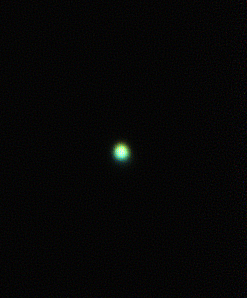Solar System
Total Solar Eclipse (2024-04-08)
Total Solar Eclipse
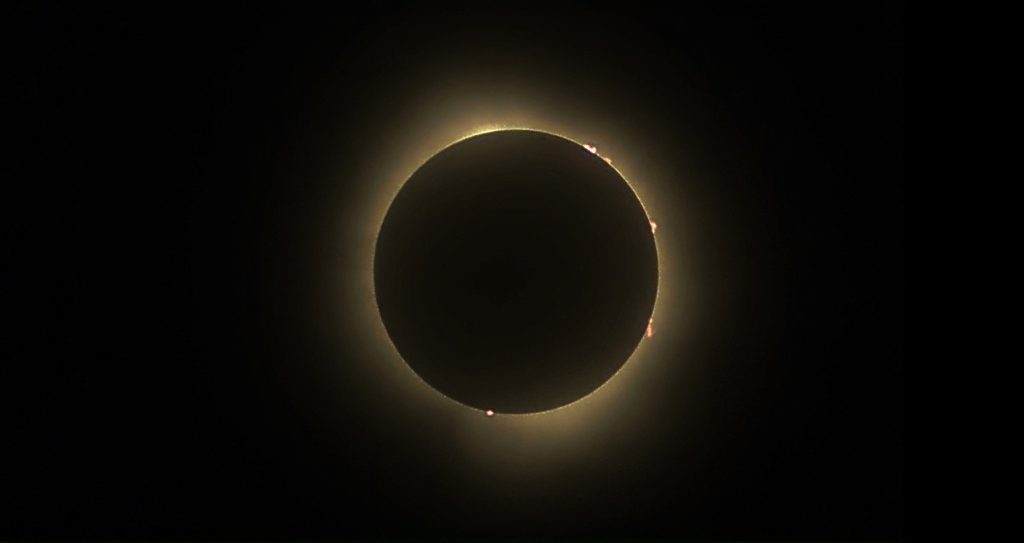
80mm f/5, Mallincam DS432cTEC, variable Exposure and Gain
April 8, 2024 19:24 to 19:26 UTC
High-altitude clouds threatened to spoil the show and persisted throughout the eclipse as viewed from the Johnstown Motel boat launch in Johnstown, ON, however they thinned just enough to provide great views and enough sharp frames for capture with MP4 format. At least 5 solar prominences visible during the entire 2 minute 24 second total eclipse. Spectacular!
Image stacked in Autostakkert using the top 10% of 4280 MP4 frames, post-processed in Affinity Photo.
North at 2 o’clock, East at 11 o’clock
more images..
Venus
Venus
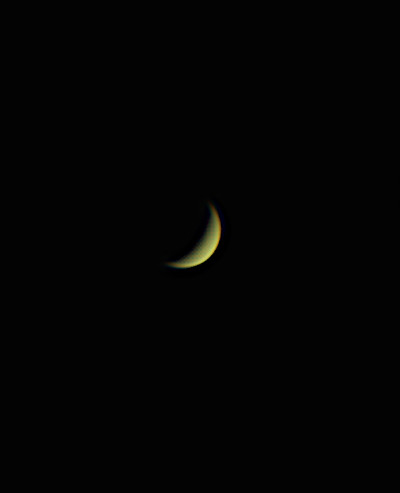
10.1” f/4.5, Mallincam DS432cTEC with 5x barlow
Exposure = 9 msec, Gain = 1/250
November 27, 2021 – 21:50 UTC
Venus on this date was about a month past greatest eastern elongation and at maximum brightness of magnitude -4.9, approximately 25% illuminated. Size is about 35 arc seconds across. At this brightness it is said that Venus casts shadows here on the ground. Image stacked in Autostakkert using the top 25% of 1009 SER frames, post-processed (sharpened) in GIMP.
North at 1 o’clock, East at 10 o’clock
Moon (2021-01-24)
Moon
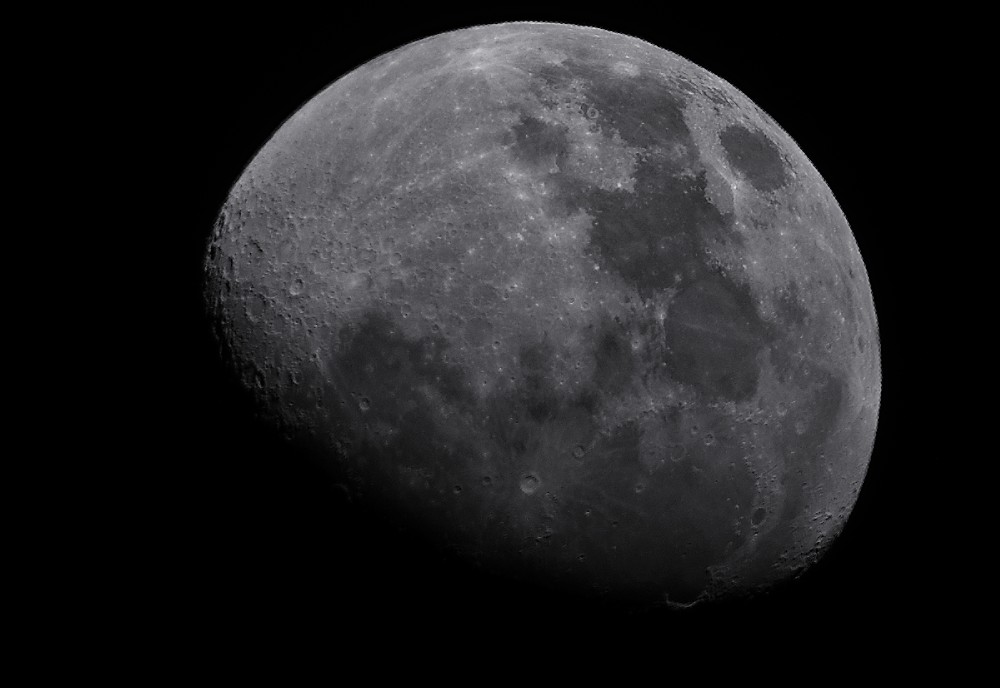
10.1″ f/4.5, Mallincam DS432cTEC
Exposure = 0.878 msec, Frames = 1, Gain = 5 of 250
January 24, 2021 – 01:16 UTC
Phase is 3 days past first quarter. Copernicus is the prominent crater lower center; sunrise on the mountains of Sinus Iridum lower right near the terminator.
North at 4 o’clock, East at 7 o’clock
more images..
Mars
Mars
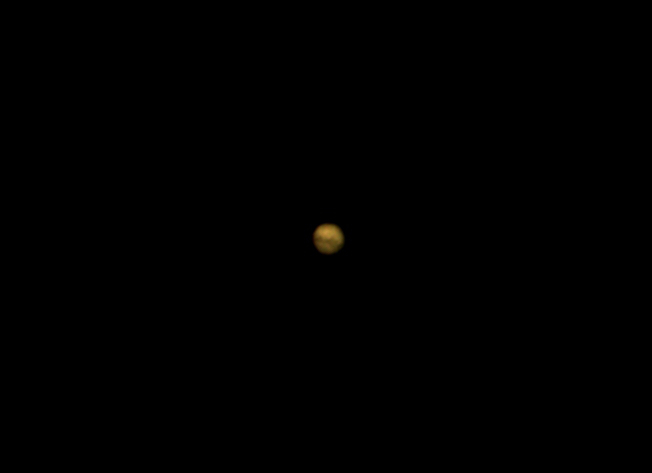
10.1″ f/4.5 (stopped to 3.8″ f/12), Mallincam DS432CTEC with 2.5x barlow
Exposure = 2.696 msec, Gain = 80 of 250
October 18, 2020 04:53 UT
Mars just past opposition. Major surface features visible are Syrtis Major (dark area to the lower right) and darker southern highlands. Mars south pole is at approximately 2 o’clock slightly inside the limb.
more images..
Asteroid – 4 Vesta (2022-08-28)
Asteroid – 4 Vesta
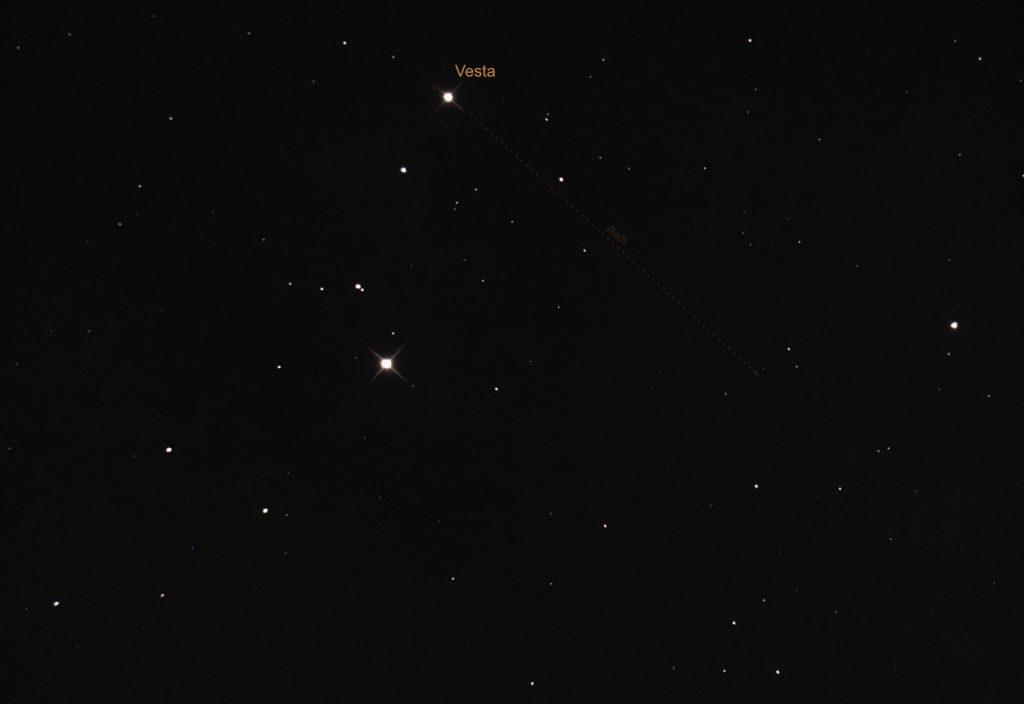
10.1″ f/4.5, Mallincam DS432cTEC
Exposure = 5 sec, Live Stacked frames = 1, Gain = 17 of 250
August 28, 2022 04:08 UTC
Vesta on this night is about 5 days past opposition and having just past it’s maximum brightness at magnitude 6.0. The brightest star in this image is 41 Aquarii, center-left, at magnitude 5.5; Vesta is the next brightest object towards the top of the frame. It is moving very fast, from this time to 24 hours from now it will have travelled about 14 arcminutes in the 4 o’clock direction, or about a half of a field of view.
Vesta is the second largest asteroid in the asteroid belt, behind Ceres, at 525 km across. It’s size rarely exceeds 0.5 arcseconds so it is not an object that we can see appreciable size with. Image post-processed in Affinity Photo, overlays in Affinity Designer.
North at 1 o’clock, East at 10 o’clock
Jupiter (2021-11-27)
Jupiter
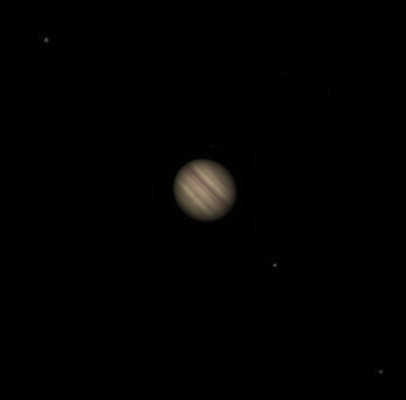
10.1″ f/4.5, Mallincam DS432cTEC with 5x barlow
Exposure = 9 msec, Gain = 30 of 250
November 27, 2021 22:06 UTC
Jupiter with 3 Galilean moons visible (Ganymede to the upper left of the disk, Io and Europa respectively to the lower right). Approximate magnitudes for the three moons are 4.5, 5.0, and 5.3 respectively. The Great Red Spot is not visible having just rotated off of the disk’s right-hand limb a half hour previously. Image stacked in Autostakkert using the top 25% of 1005 SER frames, post-processed in GIMP.
North at 1 o’clock, East at 10 o’clock
more images..
Saturn (2022-08-06)
Saturn
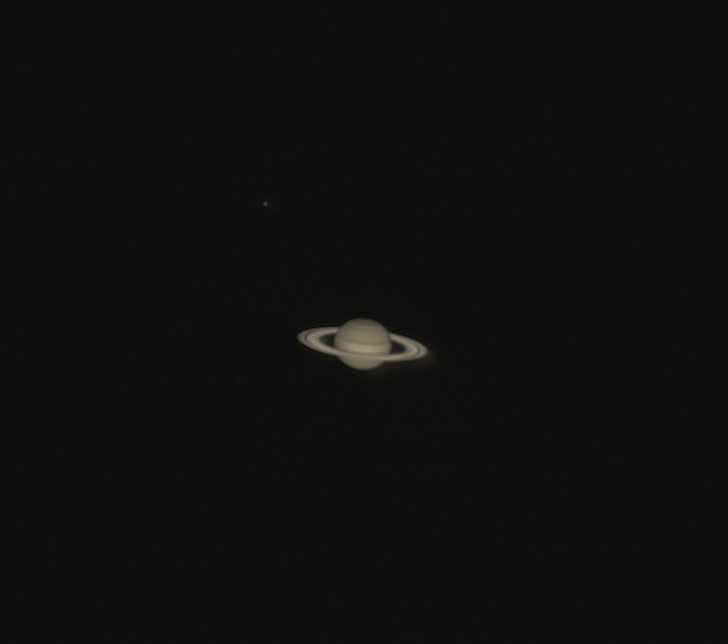
10.1″ f/4.5, Mallincam DS432cTEC with 5x barlow
Exposure = 85 msec, Gain = 12 of 250
August 6, 2022 5:20 UTC
The three main rings of Saturn, the outer A ring, the Cassini Division, the B ring, and the very faint C ring all appear to be visible in this image. The shadow of the inside front edge of the rings appears as a thin dark line along the planet’s “surface.” The planet’s disk is listed as 18 arcseconds across at this time (info from the RASC Observer’s Handbook). The largest moon in the solar system, Titan, is visible to the upper-left of the planet. Seeing conditions this evening were excellent.
Image stacked in Autostakkert using the top 25% of 1106 SER frames, post-processed in Affinity Photo.
North at 1 o’clock, East at 10 o’clock
Neptune (2022-08-06)
Neptune
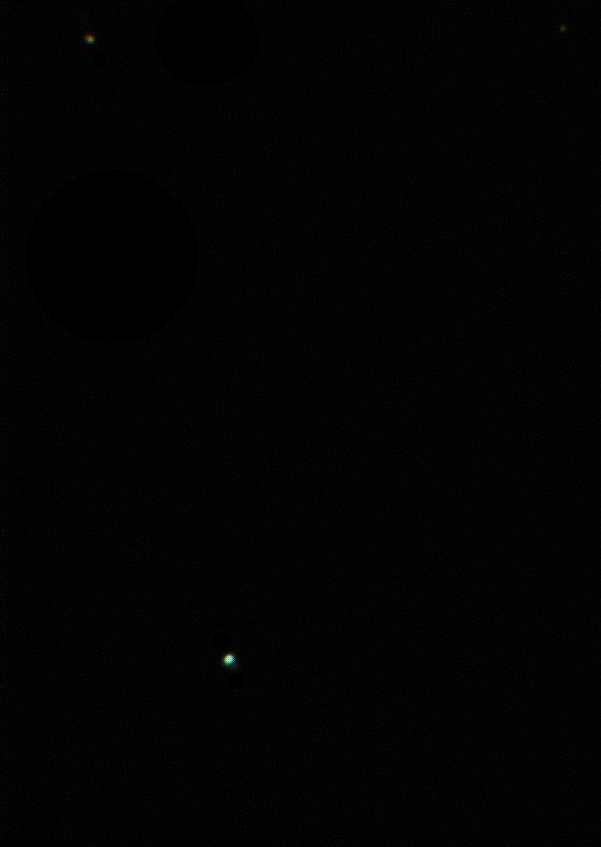
10.1″ f/4.5, Mallincam DS432cTEC with 5x barlow
Exposure = 566 msec, Gain = 120 of 250
August 6, 2022 5:40 UTC
Neptune appears as a distinctly green small disk in this view. According to the RASC Observer’s Handbook the disk is 2.3 arcseconds across. Approximately 4 arcminutes northward is a 9.6 magnitude star designated UCAC4-435-121272. In the upper-righthand corner of the image is a 10.8 magnitude star. Neptune at this time is magnitude 7.8.
Image stacked in Autostakkert using the top 10% of 250 SER frames, post-processed in Affinity Photo.
North at 11 o’clock, East at 8 o’clock
8^)
